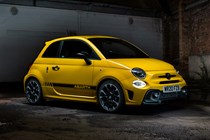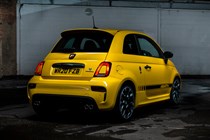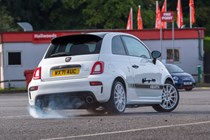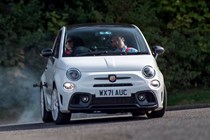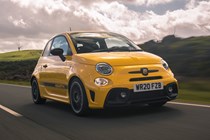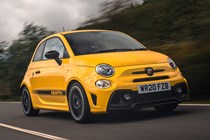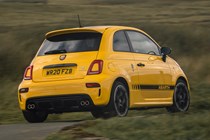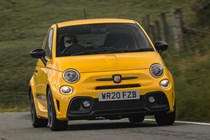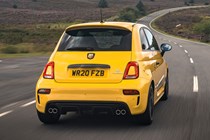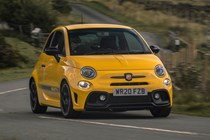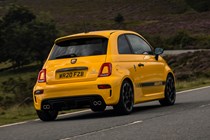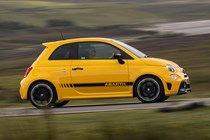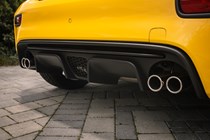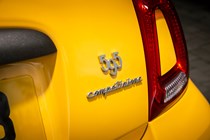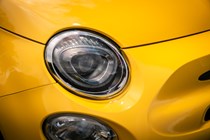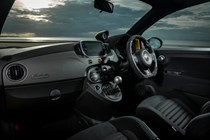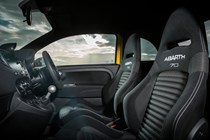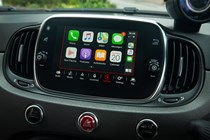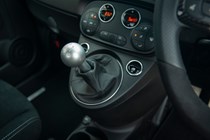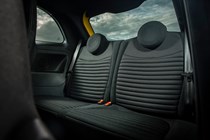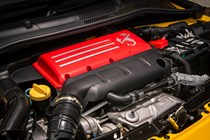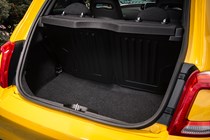
Abarth 595 review
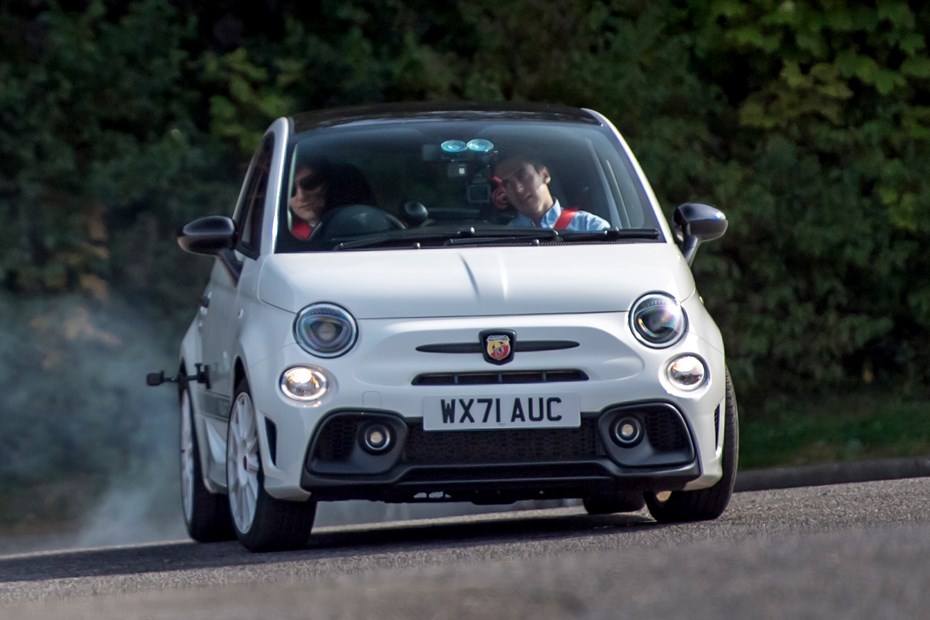
At a glance
| Price new | £22,580 - £24,080 |
|---|---|
| Used prices | £3,572 - £21,583 |
| Road tax cost | £190 - £255 |
| Insurance group | 25 - 35 |
Get an insurance quote with

|
|
| Fuel economy | 35.3 - 43.5 mpg |
| Range | 300 - 370 miles |
| Miles per pound | 5.2 - 6.4 |
| View full specs for a specific version | |
Available fuel types
Petrol
Pros & cons
- Hooligan-like handling
- Exciting top-spec model
- Cracking exhaust note
- Seriously compromised ergonomics
- Small boot, cramped rear seats
- Expensive flagship model
Overview
The Abarth 595 has been around since 2008. Over the past 14 years, Abarth has steadily refined the car’s formula, adding a series of performance, handling and equipment upgrades to keep it competitive in the small hot hatchback market.
Key rivals include the Suzuki Swift Sport, Ford Fiesta ST and Hyundai i20 N – all of which feature more modern technology. Unlike its some of its peers, the Abarth 595 doesn’t have a hybrid engine or lashings of driver assistance technology. However, that makes it a great option for petrolheads that are looking for a more analogue driving experience.
To put the Abarth’s age into perspective, Ford launched two generations of the Fiesta ST between 2008 and 2022, while Suzuki ploughed through three iterations of the Swift Sport during the same period. It’s a charming little thing, though – and we reckon it’s well worth sacrificing a bit of modern convenience for the pure joy of driving it.
You have a choice of two powertrains, both based on the same turbocharged 1.4-litre four-cylinder petrol engine. The more affordable Abarth 595 variants produce 165hp, while the range-topping 695 models develop 180hp. Both are mated to a five-speed manual gearbox as standard, although you can have an automated manual transmission at an extra cost. Top tip – don’t bother.
You can also choose between three trim levels. The most basic Abarth 595 comes as standard with 17-inch alloy wheels, manual climate control, rear parking sensors and an Alcantara sports steering wheel. The middling Turismo variants get some comfort-focused extras such as automatic climate control, xenon headlamps, leather seats and a six-speaker stereo system by Beats.
The fastest Abarth 695 Turismo and Competizione gain some performance tweaks to complement their added power. Upgrades include larger brakes, a mechanical limited-slip differential and, for the Competizione, a pair of carbon fibre-backed bucket seats. However, these upgrades are reflected in the price – the cheapest Abarth 695 starts from £26,745.
Over the next few pages, we’ll walk you through the best and worst aspects of the Abarth 595, taking into consideration its practicality, interior quality, efficiency, performance and driving experience before offering our final verdict on the car. Click through the following pages to find out if it’ll suit you – or whether you’d be better off with the more conventional Fiesta ST.



